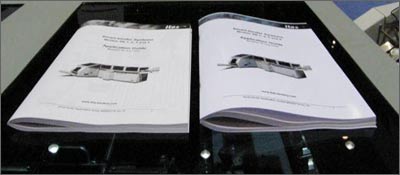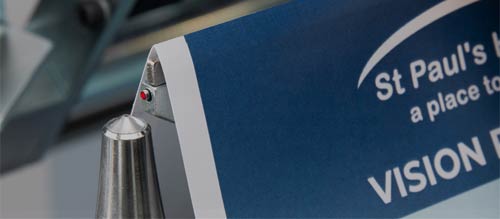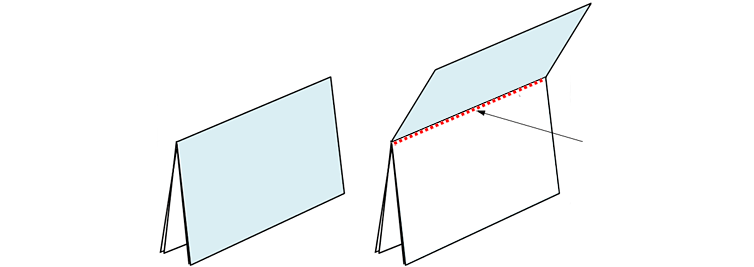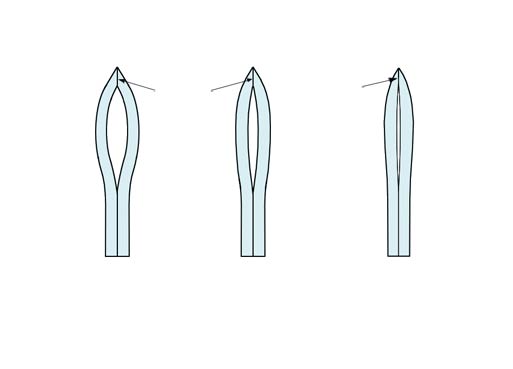IBIS ISG-100 Cold Glue System, datasheet
The Smart-binder may be supplied as model SB-3 which also includes IBIS’s unique ISG cold glue binding system
This system produces a “stitchless” book which has better lay-flat qualities than a wire-stitched booklet, as illustrated in the photo below. The lay-flat difference is less pronounced when making thin booklets.


The ISG cold-glue ‘nozzle’ applies a row of cold-glue ‘dots’ (or a continuous glue line) to the inside of each folded sheet as it passes through the Smart-binder folder. Sheets are then collected on top of each other (on the saddle) and pressed together tightly when they reach the stitching station (the stitching heads are inhibited when cold gluing, or replaced with a pressing ‘anvil’).

bind method
between sheets
(not visible unless
sheets are torn
apart and
inspected closely)
The many advantages of ISG cold-gluing over conventional wire-stapling include:
- ISG glue gives higher page pull strength on the outer and inner sheets
- Note that the paper bond strength when using ISG gluing is linked to the integrity of the paper surface. Higher strength results from more absorbent papers. Certain toners may weaken the bond strength if applied to the same area as the ISG glue (the sheet fold)
- ISG gluing results in a tighter fold, particularly on thicker books. This is because wire stapling tends to ‘open up ‘ the book and the moisture in the cold glue softens the paper fibers and helps give a tighter ‘set’ to the fold
- The ISG gluing process allows the number of pages in the book to be changed between minimum and maximum on-the-run without any adjustment (wire stitching requires stitch head pressure adjustments)
- ISG gluing allows the book format size to be changed without adjustment (wire stitch heads may have to be moved to a different position when changing book lengths)
- The ISG cold-glue is a “maintenance-free” system which is easy to operate than wire stitch heads
- Cold-glued books can be recycled more easily than books containing wire staples
- Glue binding avoids any child safety (finger damage) issues relating to the edges of wire staples
- Glued books can sometimes be mailed directly, unlike wire-stapled books
- ISG cold glue costs approximately the same in consumable material costs (on a ‘per book’ basis) as wire stitches (and much less than hot-melt EVA adhesives used for conventional ‘perfect-binding’)

Wire-stitching v ISG cold-gluing
staples
between sheets
process
(conventional
booklet-maker)
sheet folding prior
to wire-stitching
(all Smart-binders)
prior to ISG cold-gluing
(Smart-binders SB-1G,
SB1-G4, SB-3 and SB-4)
For the recommended glue to be used with the ISG-100 system view the ISG glue, Specs & Safety datasheet. If an alternative glue is to be used then it must have a similar specification.